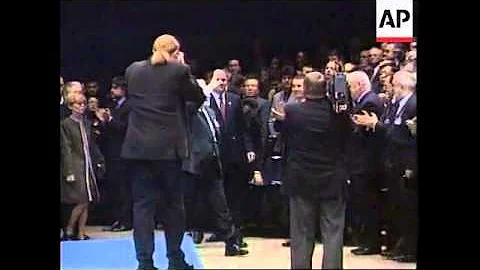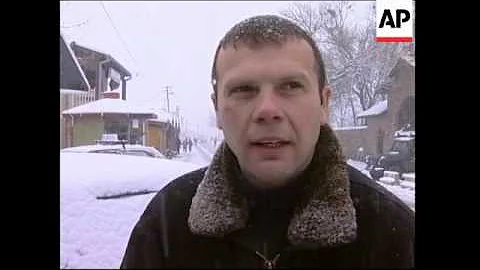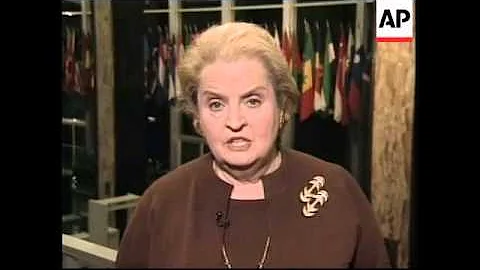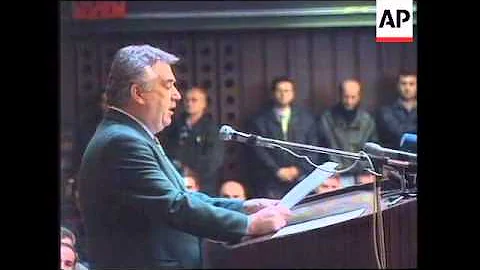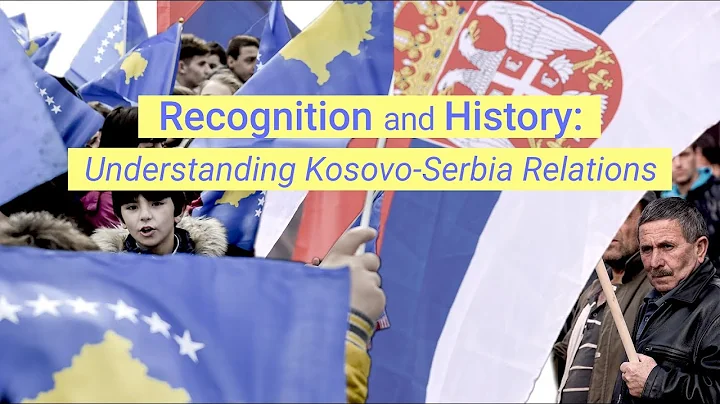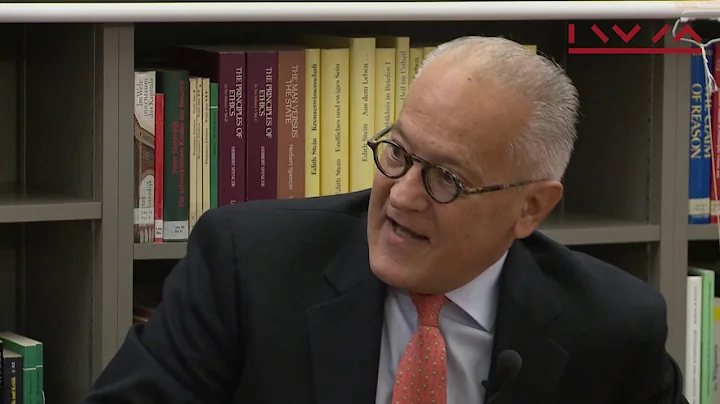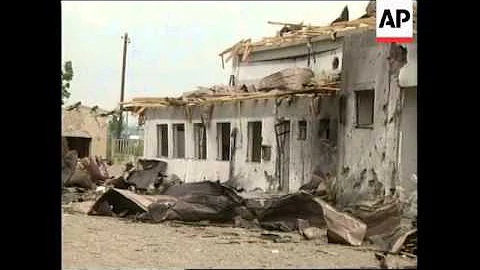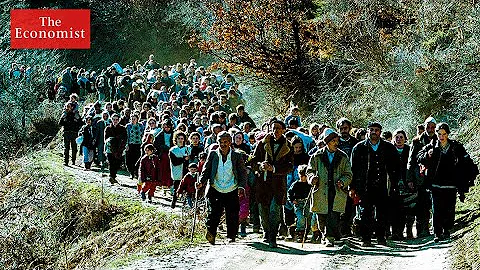The author chose the Kosovo Air Raid War because it was an important high-tech modern local war with widespread influence at the end of the 20th century, and had an important impact on the development of modern international strategic pattern and military theory.

Back in the late 1980s, the government of the Republic of Serbia pursued a relatively tough line, which once again triggered a wave of strikes, school strikes, and demonstrations among the Kosovo Albanians. For this reason, the Yugoslav government sent special forces composed of civilian police from various republics to Kosovo in October 1987. In the same year, mass gatherings and protests were banned. In February 1989, as the Republic of Serbia was preparing to adopt a constitutional amendment on the 23rd, and the Central Committee of the Yugoslav Communist Party dismissed Vlasi, the former chairman of the Kosovo Provincial Committee of the Communist Party of Yugoslavia, from his position as a member of the Central Committee of the Yugoslav Communist Party, the Albanians set off another uprising. Wave of strikes. Since February 20, 1,300 Albanian miners at the "Trepca" lead-zinc mine have been sitting underground to protest against the amendment of the 1971 Constitution of the Republic of Serbia (this constitution strengthened the power of the Autonomous Province of Kosovo in the Republic of Serbia and the federation) and status); demanding the restoration of Flassie's position and other political demands. The strike wave spread across more than a dozen cities in the province, paralyzing its economy and straining ethnic relations. The Yugoslav government decided to take "special measures" on the 27th. A large number of troops and tanks entered the provincial capital. At the same time, it made concessions to the strike demands. Provincial Party Committee Chairman Molina and others resigned. The strike wave has come to an end, but the "state of emergency" including the imposition of a curfew has not been cancelled. Starting on January 23, 1990, approximately 40,000 students and workers protested in Pristina, the capital, demanding the abolition of the state of emergency and the release of former Provincial Party Committee Chairman Frasi. Demonstrations took place across cities and villages. Demonstrators clashed with police, resulting in casualties. An emergency meeting between the Federal Government of Yugoslavia, the Presidium of the Serbian Communist League and the Kosovo Provincial Government decided that the Yugoslav People's Army would enter Kosovo.

In this context, Western countries led by the United States are pursuing a comprehensive expansion strategy in politics, economy, diplomacy, military and ideological in Europe, and have formed a relationship with the Balkan country Federal Republic of Yugoslavia which insists on independence and maintains national unity. sharp strategic conflict. With the emergence of the Kosovo independence issue within the Yugoslav Federation, Western countries took the opportunity to intervene heavily, leading to an overall intensification of conflicts between the two parties. The Federal Republic of Yugoslavia insists on opposing the entry of multinational forces into Kosovo, and at the same time opposes NATO supporting the independence of the Albanian separatist forces in the region and interfering in the internal affairs of the Federal Republic of Yugoslavia, but this was rejected by NATO.
Air strikes and counter-air strikes in the Kosovo War can be roughly divided into four stages:
The first stage is to compete for air supremacy in the theater area
NATO carried out the first to third rounds of air strikes against Yugoslavia, including airports, radars , and missiles launch site, communication and other facilities. During this stage of air strikes, NATO dispatched more than 600 sorties of various types of combat aircraft, using advanced fighters such as F-16, F-18, EA-6B, and B-52 strategic bombers, B-2 stealth strategic bombers , deployed Warships in the Adriatic Sea fired Tomahawk cruise missiles. The Yugoslav Army fought tenaciously in the face of large-scale NATO air strikes.

The second stage paralyzed the command of the Yugoslav Army
NATO carried out the fourth to seventh rounds of air strikes against Yugoslavia. The key targets of the strikes were core military targets such as Yugoslavia’s command centers and bases in order to paralyze Yugoslavia’s military operation mechanism and disintegrate it. its combat effectiveness. During this stage of air strikes, NATO dispatched more than 1,000 sorties of various types of combat aircraft, with an average of about 250 sorties per round. Beginning with the sixth round of air strikes, on March 27, northwest of Belgrade, Yugoslavia missile forces shot down a U.S. F-117 "Nighthawk" stealth fighter-bomber. This was the first time this type of aircraft was put into actual combat in 1989. Being shot down for the first time greatly boosted the morale of the Yugoslav people.

The third stage weakened the potential of the Yugoslav Army
From April 1st to April 29th, NATO carried out the eighth to 37th rounds of air strikes against Yugoslavia, targeting military camps, special police units, and armored vehicles During this stage of air strikes, NATO dispatched nearly 10,000 sorties of various types of fighter aircraft, with an average of more than 340 sorties per round.Due to the weak combat strength of the Yugoslav Republic, heavy losses, lack of ammunition and fuel, and disruption of transportation, the Yugoslav Federation was in an increasingly difficult situation, but it still persisted in fighting.

The fourth phase of the air raids increased significantly
April 30 to June 10, starting from the 38th round of air raids until the end of the war. From April 23rd to 25th, the NATO Summit was held in Washington. The meeting issued a statement emphasizing that the war against Yugoslavia should be carried out to the end. The air strikes at this stage are characterized by an unprecedented increase in the intensity of the air strikes. According to NATO, they will carry out non-stop bombing of Yugoslavia 24 hours a day, 7 days a week. Since April 30, more than 600 aircraft have been dispatched every day, including 792 on May 28. The Yugoslavia is basically in a passive situation. Under the mediation of the Russian Presidential Envoy Chernomyrdin, in order to preserve its strength, the Yugoslavia has agreed to accept the agreement framework reached by the Group of Eight on the political settlement of the Kosovo crisis. On June 9, after many negotiations, the military delegations of Yugoslavia and NATO finally reached an agreement and agreed to withdraw their troops within 10 days. On June 10, Yugoslavia began to withdraw its troops and NATO stopped bombing.

The Kosovo War was a large-scale air raid code-named "Alliance Force" launched by NATO against Yugoslavia. The battle lasted from March 24 to June 10, 1999. NATO had zero combat casualties, but Yugoslavia suffered heavy losses. NATO dispatched a total of 38,000 aircraft sorties and launched and dropped approximately 23,000 bombs and missiles, of which precision-guided weapons accounted for 35%. The Kosovo air raid was a very typical aviation and missile battle. It was a high-tech asymmetric battle against medium and low-tech. It was an important high-tech modern local war with widespread influence at the end of the 20th century and had a profound impact on modern international strategy. It had an important influence on the development of military structure and military theory.
